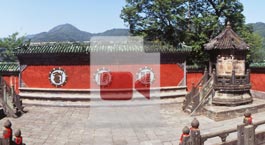History of Wudang Mountains
( english.cntv.cn )
Updated: 2012-11-15
As early as the Eastern Han Dynasty (25–220 AD), the mountain attracted the Emperor's attention. During the Tang Dynasty (618–907), the first site of worship—the Five Dragon Temple—was constructed. Some of the monasteries were damaged during and after the "cultural revolution" of 1966–1976, but the Wudang mountains have lately become increasingly popular with tourists from elsewhere in China and abroad due to their scenic location and historical interest.
The monasteries and buildings were made a UNESCO World Heritage Site in 1994. The palaces and temples in Wudang, which was built as an organized complex during the Ming Dynasty (14th–17th centuries), contains Taoist buildings from as early as the 7th century. It represents the highest standards of Chinese art and architecture over a period of nearly 1,000 years. Noted temples include the Golden Hall, Nanyan Temple and the Purple Cloud Temple.
On January 19, 2003, the 600-year-old Yuzhengong Palace at the Wudang Mountains was accidentally burned down by an employee of a martial arts school. A fire broke out in the hall, reducing the three rooms that covered 200 square metres to ashes. A gold-plated statue of Zhang Sanfeng, which was usually housed in Yuzhengong, was moved to another building just before the fire, and so escaped destruction in the inferno



